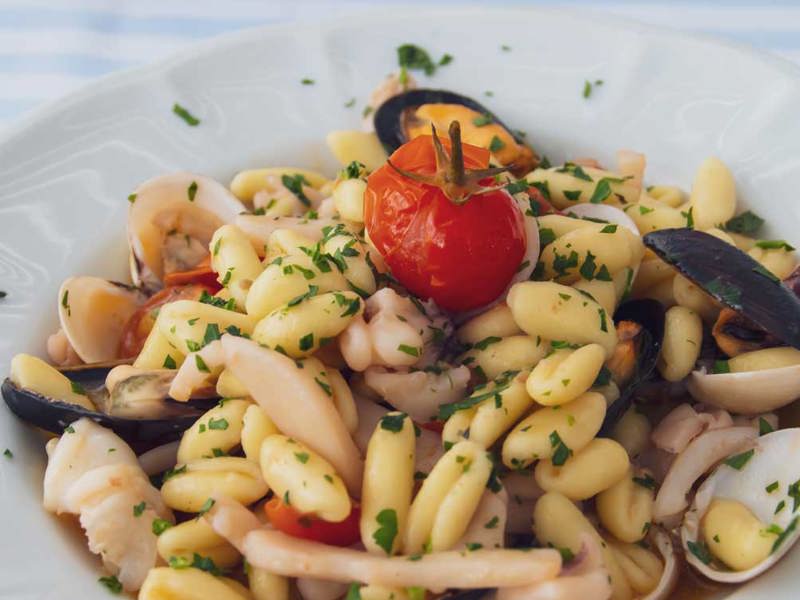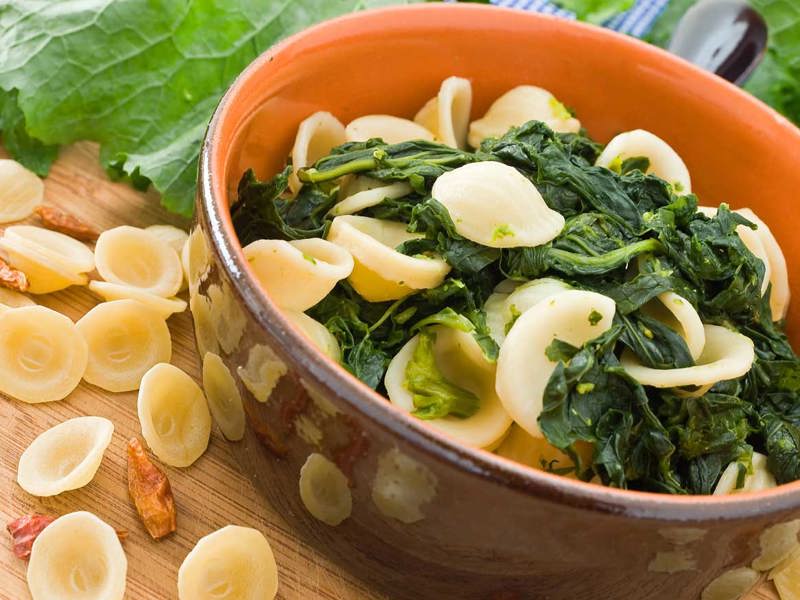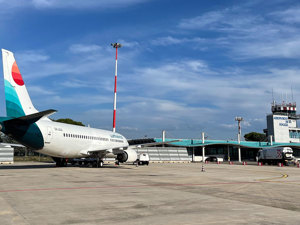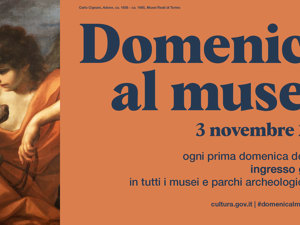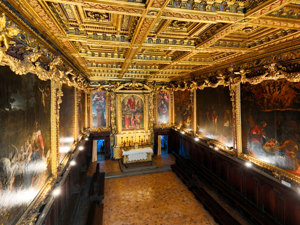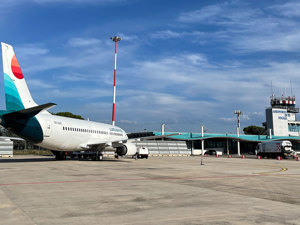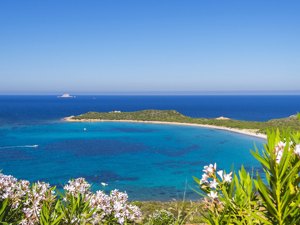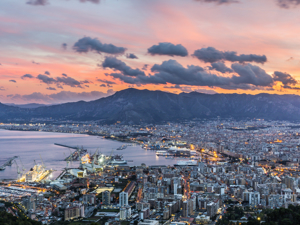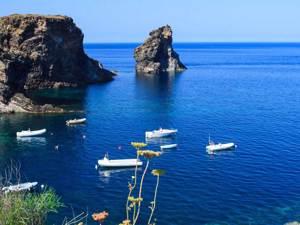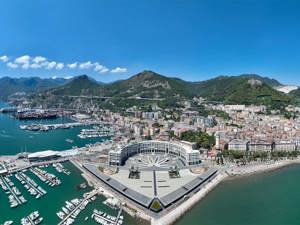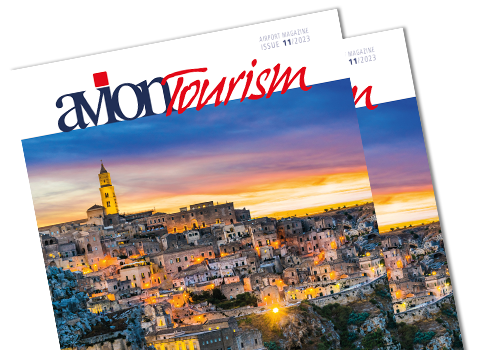A journey through history, culture, and tradition
Foggia is a fascinating city in the Puglia region of Southern Italy, offering visitors an authentic and fulfilling experience. With its ancient churches, historical monuments, and typical cultural attractions, it provides an unforgettable journey for those who visit.
Founded in the 11th century, the city has an ancient history reflected in its monuments and architecture. The city rose from the nearby Arpi, an ancient center of Daunia, and when Frederick II chose it as the imperial residence of the Kingdom of Sicily, it reached its greatest splendor. This is still evident today in Via Arpi, the old historic center. Indeed, on Via Arpi, one can still see an arch and a fountain, which are the ancient remains of Frederick II's imperial palace that overlooked this street.
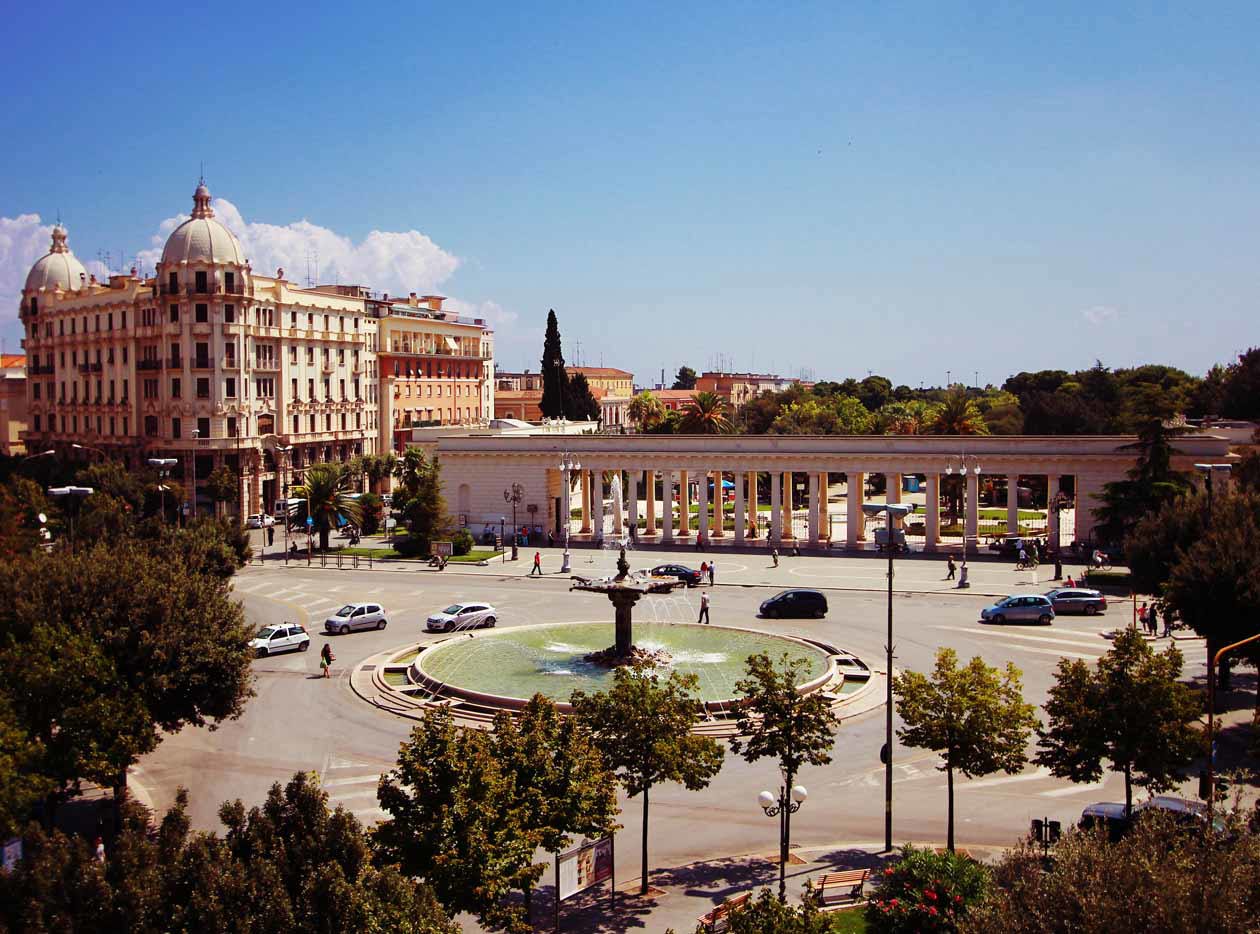
Foggia, Piazza Cavour. Photo: Copyright © Claudia Amatruda / A.Re.T. Regione Puglia
A tour of Foggia can start right from the ancient Via Arpi, where the Arpi Palace is located. The palace, now home to the Civic Museum and Art Gallery, houses archaeological and ethnographic treasures as well as paintings and historical artifacts that narrate the history of Foggia and the surrounding region. From the sumptuous Royal Palace of Frederick II in Foggia, the Arpi Palace retains only an archivolt with vegetal motifs, supported by eagles used as corbels.

Foggia, Cathedral. Photo: Copyright © A.Re.T. Regione Puglia
In the city center, one can admire the thirteenth-century Cathedral of Santa Maria Assunta in Cielo, which houses the icon of the Madonna of the Seven Veils, precious to all the faithful. On Via Arpi, there is also the Church of Saint Augustine with a Baroque façade and statues of Saint Augustine, San Leonardo, and San Nicola da Tolentino.
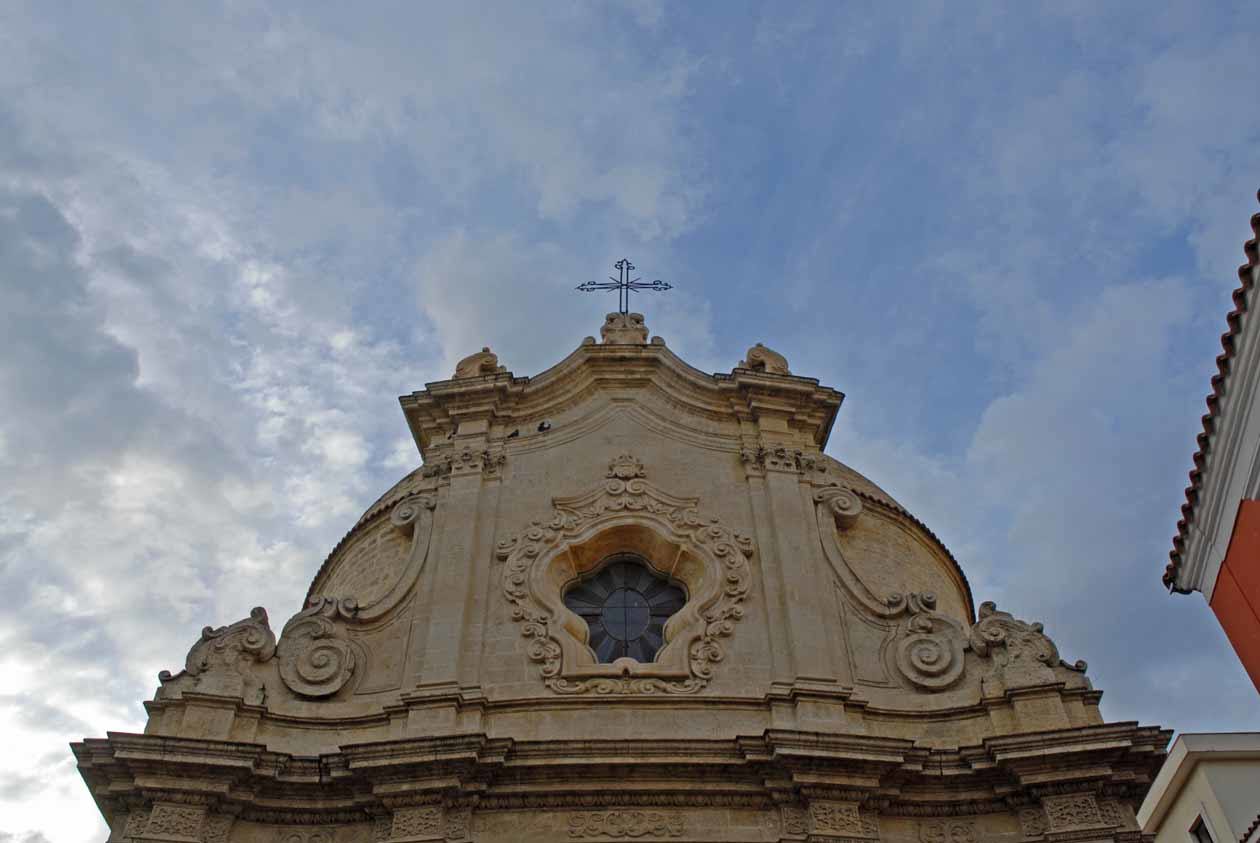
Foggia, Chiesa dell'Addolorata located in the homonymous square near Via Arpi. Photo: Copyright © A.Re.T. Regione Puglia
Facing Via Ricciardi is the oldest basilica in Foggia, the Church of San Tommaso, rebuilt after the earthquake of 1731. Tradition says that it was in this church that the icon of the Madonna of the Seven Veils was brought after its miraculous discovery in 1062. Also particularly beautiful is the Church of the Addolorata, dedicated to Addolorata Our Lady, located in the homonymous square near Via Arpi. It was erected between 1739 and 1741 and completed in 1871 with stucco decorations and frescoes inside where the statue of the Madonna Addolorata, made at the end of the 18th century, is admired.
Other interesting architectural expressions are found in the Belvedere Palace, the 19th-century 'Umberto Giordano' Municipal Theater in Neoclassical style designed by engineer Luigi Oberty, and the Municipal Villa, a well-kept park dedicated to Karol Wojtyla.
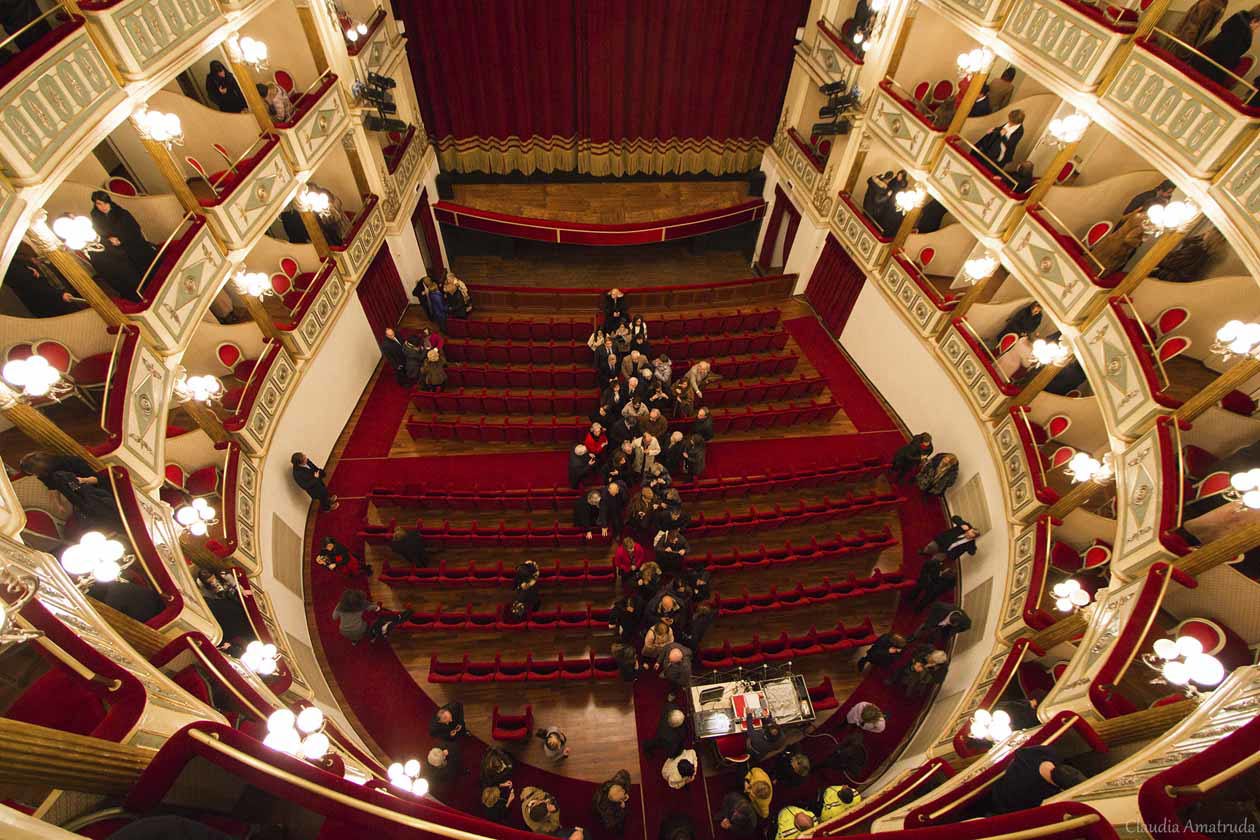
Foggia, Giordano Theater. Photo: Copyright © Claudia Amatruda / A.Re.T. Regione Puglia
In the city center, a visit is also warranted to the former Podestà Palace on Corso Garibaldi, now the Town Hall of Foggia, an imposing building that echoes the grandeur of Frederick II and is accessed by two large symmetrical side ramps. Other architectural treasures include the Romanesque-Gothic Palazzo de Nisi in Foggia and the Palazzo De Maio - De Vita - De Luca with special decorations on the façade.
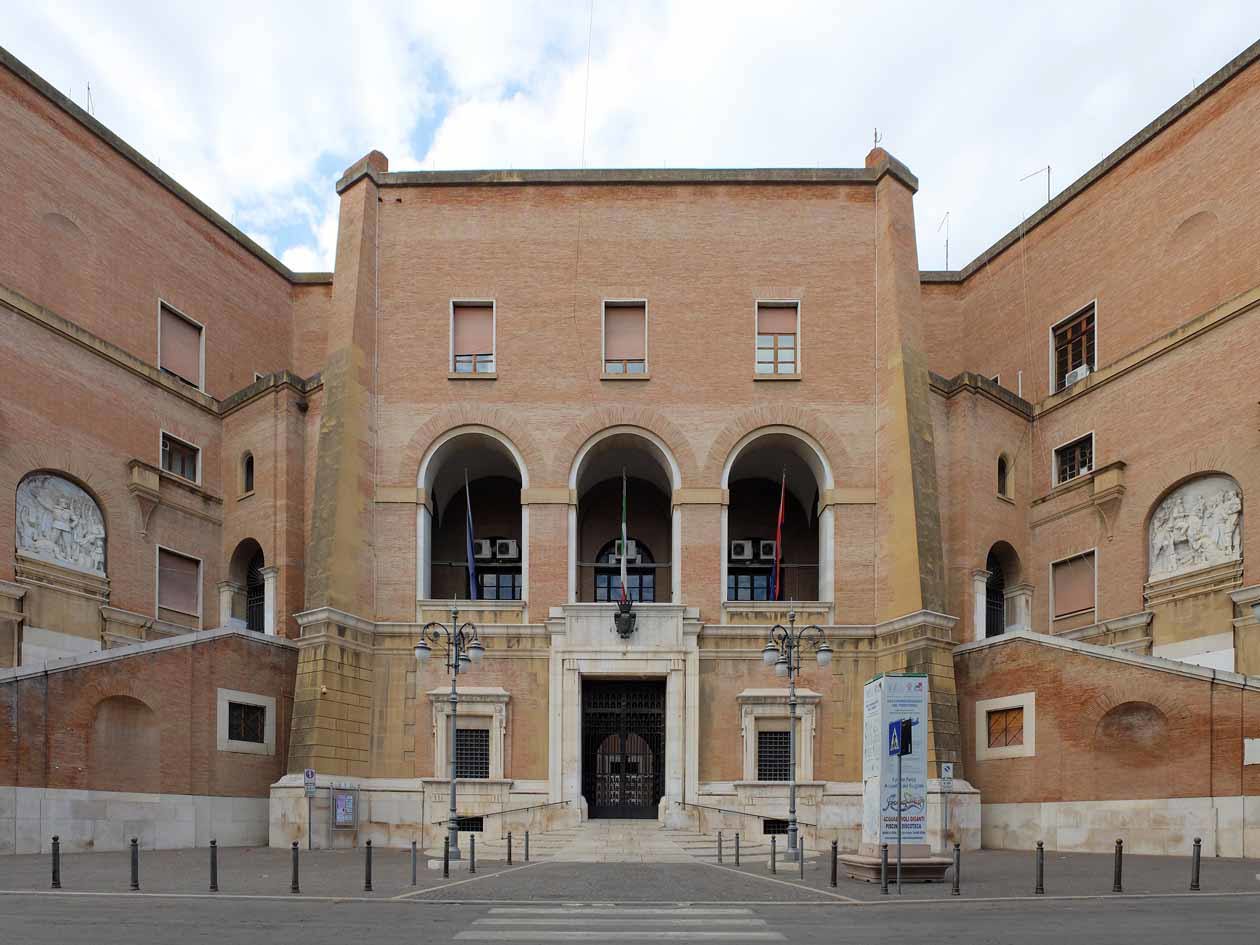
Foggia, Podestà Palace. Photo: Copyright © Sara Ferraro / A.Re.T. Regione Puglia
From Via Arpi, one can also venture into the underground city and urban hypogea. Archaeology enthusiasts can head out of the city center a few kilometers towards San Marco in Lamis, where the Archaeological Park of Passo di Corvo is located, to discover the remains of a Neolithic village active between the 5th and 4th millennia BC.

Borgo Segezia, a district of Foggia. Foto: Copyright © Sara Ferraro / A.Re.T. Regione Puglia
One can also visit Borgo Segezia, a district of Foggia, named after the Greek goddess Segesta (invoked for the harvest of fields) and hosts particular fascist-era architectures like the bell tower and the square that date back to 1938 by architect Concezio Petrucci.
But Foggia is not just about history and culture. The city also offers splendid opportunities to explore the surrounding nature. A short distance from the city center lies the Gargano National Park, a protected area of extraordinary natural beauty with breathtaking landscapes, ancient villages, and pristine beaches.

Gargano National Park Photo: Copyright © Sisterscom.com / Depositphotos
Near Foggia, one can also visit the Castle of Monte Sant'Angelo, situated on the slopes of Monte Sant'Angelo, which offers a breathtaking view of the city below. Nearby, the Svevo Angioino Castle of Manfredonia and the ruins of the Svevo Angioino Castle of Lucera are also worth exploring.
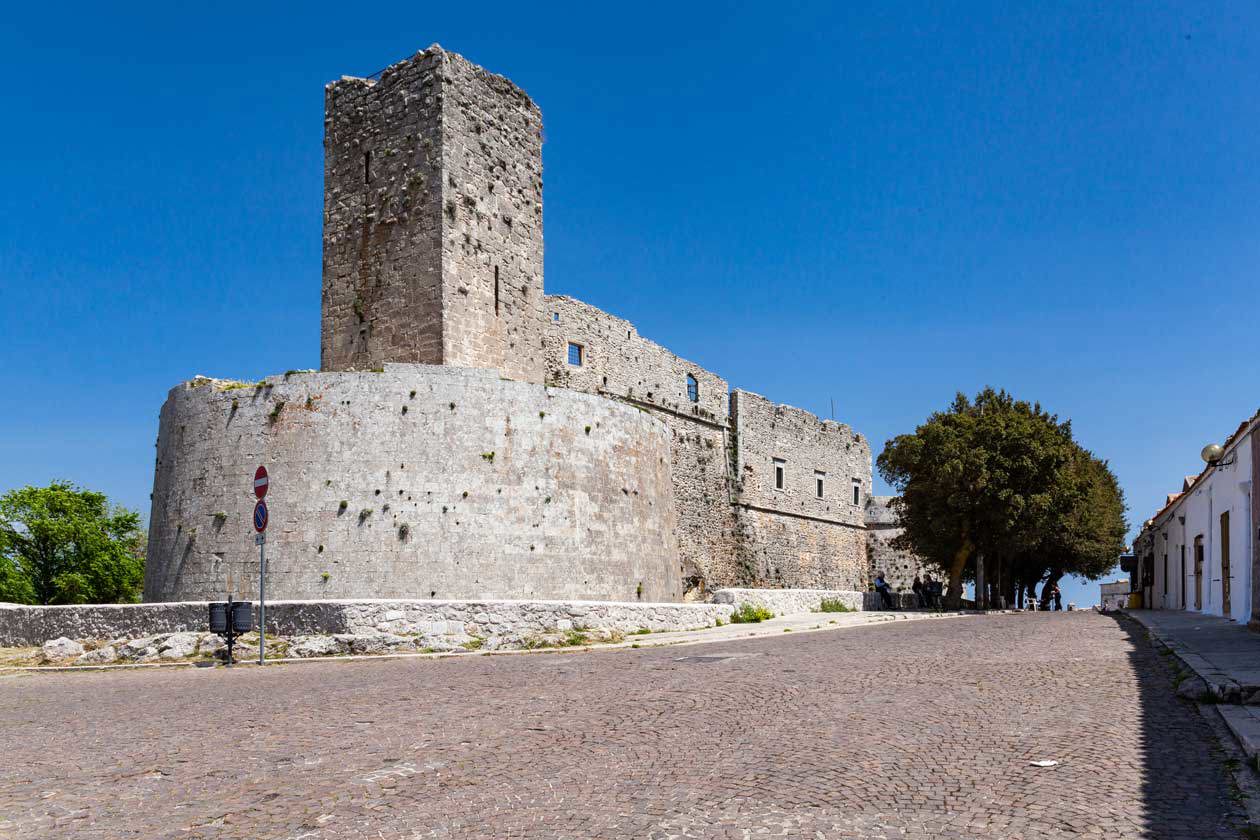
Castle of Monte Sant'Angelo, Monte Sant'Angelo (Foggia). Photo: Copyright © Sisterscom.com / Depositphotos
The historic center of Foggia is lively and vibrant until late at night. The narrow streets around the Cathedral Square are teeming with cafes, pubs, wine bars, restaurants, taverns, and nightclubs. The courtyards, alleys, and squares are often crowded thanks to various cultural initiatives, such as live music events or theater festivals.
A journey within the journey is then the cuisine of Foggia, a riot of authentic flavors and genuine dishes that represent the beating heart of the culinary tradition of Puglia: an unforgettable gastronomic journey through the culinary delights of the city known as "Italy's granary" for its cereal and tomato crops in the heart of the Tavoliere delle Puglie.
During the exploration of the city, one stops to taste authentic flavors like friselle, taralli, focaccias, and pizzas topped with fresh tomato and extra virgin olive oil or the famous orecchiette with turnip tops, an iconic first course of Apulian cuisine to pair with local wines. Other must-try dishes include pasta e fagioli, a rustic and flavorful soup prepared with local beans and fresh pasta, cavatelli with fish, and delicious eggplant parmigiana. One must also try the cheeses, from burrata to caciocavallo or pecorino. Finally, one cannot leave Foggia without tasting its traditional sweets. Among the most renowned are the black taralli with vincotto or sweet taralli, crumbly biscuits flavored with lemon zest and vanilla, perfect to enjoy dipped in coffee or accompanied by a glass of sweet wine.
Text by Nicole Villa
Avion Tourism Magazine
Photos: Copyright © Sisterscom.com / Depositphotos
Photos: Copyright © A.Re.T. Regione Puglia / viaggiareinpuglia.it
Photographers: Credits listed below photos.
Tourism Board
viaggiareinpuglia.it
Partnership with Booking.com
Where to sleep in Foggia
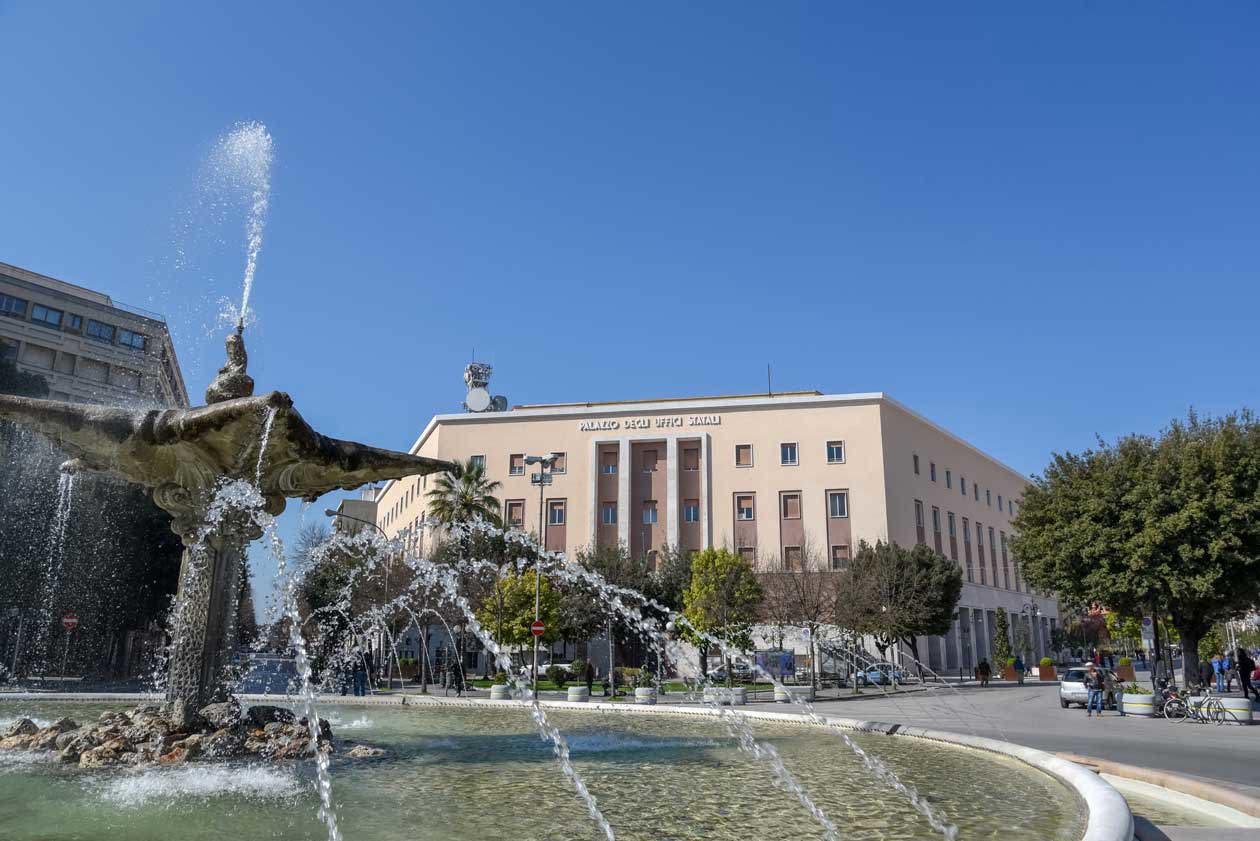
Foggia Photo: Copyright © Sisterscom.com / Fabrizio Vigiano Photos / Depositphotos
Foggia offers various possibilities for staying in facilities equipped with the best services.
To find the ideal hotel and the best offers you can do a search for the stars but also for districts or landmarks.
HOUSES, APARTMENTS, B&Bs
Stays in houses, B&Bs and apartments:
WHERE TO GO IN FOGGIA
Tourist attractions of Foggia
Foggia Cathedral
Foggia Cathedral, dedicated to Santa Maria Assunta in Cielo, stands in the historic center. Built by order of William the Good in the late 12th century, it is a harmonious blend of Baroque, Neoclassical, and Gothic styles. Enhanced by an 18th-century bell tower, it features a facade decorated with a zoophoric string course, a testament to the Foggian school of architecture and sculpture. Inside, the basilica-plan structure reflects the elegance of the late Baroque era, with a frescoed crypt and artworks by Neapolitan artists of the 18th century. Among the treasures, the Sacred Table of Santa Maria dell'Iconavetere, known as the Madonna of the Seven Veils, an ancient Apulian icon depicting the Virgin standing, holding the Child with her hands, is especially notable.
Church of San Tommaso
The Church of San Tommaso in Foggia was erected on the site of the Taverna del Gufo, where legend has it the Icon of the Madonna of the Seven Veils was found, making it the city's first place of worship. Once facing Via Arpi, today the church looks onto Via Ricciardi, displaying a Baroque style resulting from the rebuilding after the earthquake of 1731. It is possible that the Iconavetere was housed within these walls shortly after its miraculous discovery in 1062. The interior of the Church of San Tommaso is austere and houses several treasures, including wooden statues of San Biagio and the Immaculate Conception, attributed to Colombo, as well as paintings by Nicola Montagano, among which 'The Incredulity of Saint Thomas' on the main altar stands out.
Giordano Theatre
In the center of Foggia, the imposing Neoclassical facade of the Giordano Theatre, an elegant building inaugurated in 1828 and designed by engineer Luigi Oberty, stands out. The theatre appears as an architectural jewel with a facade restored in 1877. Originally, the facade featured a portico with six columns, three large windows, and a protruding pediment. The windows have been replaced with balconies, increasing the seating capacity. The interior, shaped like a horseshoe, includes a stalls area and four tiers of boxes, the last being a gallery. The richly decorated ceiling enhances the ambiance with frescoes and stucco work. Named after the famous Foggian composer Umberto Giordano, the theatre hosts major artists and stages performances ranging from drama to opera.
Former Podestà Palace
Today's City Hall, the former Podestà Palace of Foggia, is located along Corso Garibaldi. Built in 1935 based on designs by architect Armando Brasini, the building draws inspiration from Frederician architecture in Puglia. Two side staircases converge towards the central block, giving the main facade a sculptural dynamism, creating a harmonious dialogue with the square in front. Brick, Mazzaro stone, and white Trani stone, typical materials of the region, lend the building a restrained elegance and a sense of belonging to the area. Crossing the threshold of the palace, one is enveloped in an atmosphere of solemnity. The spacious entrance hall, with its marble floor and imposing columns, leads to the various municipal rooms where the city's political and administrative life unfolds.
Palazzo De Maio - De Vita - De Luca
Palazzo De Maio - De Vita - De Luca in Foggia was built in the 16th century and is a noble building that architecturally represents an emblematic example of the Renaissance in Puglia. The facade, adorned with decorative elements, spans two levels. The entrance portal, topped by a balcony, is framed by two concave fluted pilasters that culminate in Ionic capitals. The architrave, decorated with raised floral motifs, features a curved pediment and a denticulated stone coat of arms. An inscription, still readable today, states "Ut videat et videatur" ("To see and be seen"). This phrase, emblematic of the Renaissance era, sums up the aesthetic conception that inspired the construction of the palace: a place where functionality harmoniously combines with beauty.
Palazzo De Nisi
In the center of Foggia, Palazzo de Nisi stands as an architectural gem with a facade rich in sculptural decorations. Built at the end of the 18th century, the palace bears witness to the influence of the Romanesque-Gothic style that characterizes the city's main church. The two main facades, facing Corso Vittorio Emanuele and Piazza Federico II, are decorated with medallions depicting historical and mythological figures, while volutes, human heads, and grotesque figures embellish the windows and balconies. The ornamentation, the result of the mastery of local stonecutters, gives the palace a noble elegance. The inner courtyard, adorned with an ancient well, leads to the staircase that ascends to the upper floors with frescoed rooms and sumptuous halls. Today, Palazzo de Nisi hosts art exhibitions and concerts.
Civic Museum and Art Gallery
The Civic Museum and Art Gallery of Foggia houses prehistoric artifacts from the Neolithic village of Masseria Guadone, narrating the history of civilization in Puglia. Daunian ceramics adorned and Roman sculptures from the imperial era transport visitors to distant epochs. The Art Gallery hosts paintings by local masters such as Francesco Saverio Altamura, a representative of Italian Neoclassicism. Canvases by Francesco De Mura and the Solimena school, along with examples from the Neapolitan school, complete the artistic panorama. An ethnography section illustrates the 19th-century peasant culture of the Gargano area with agricultural tools, clothing, and reconstructions of domestic environments.
Municipal Villa
Just steps from the Railway Station, the Karol Wojtyla Municipal Villa of Foggia is a green oasis with a monumental double Doric columned entrance. In the garden, there are fountains, flower beds, and tree-lined avenues for walking and relaxing. At the center of the park, a large fountain is framed by multilinear flower beds with palms and cypresses. Continuing along the main avenue, a Neoclassical area opens up where concerts and musical events are held. The path through the greenery leads to a picturesque artificial cave preceding the Boschetto. In this wilder area of the park, a circular temple immersed in vegetation offers an oasis of meditation in nature.
In the surroundings of Foggia
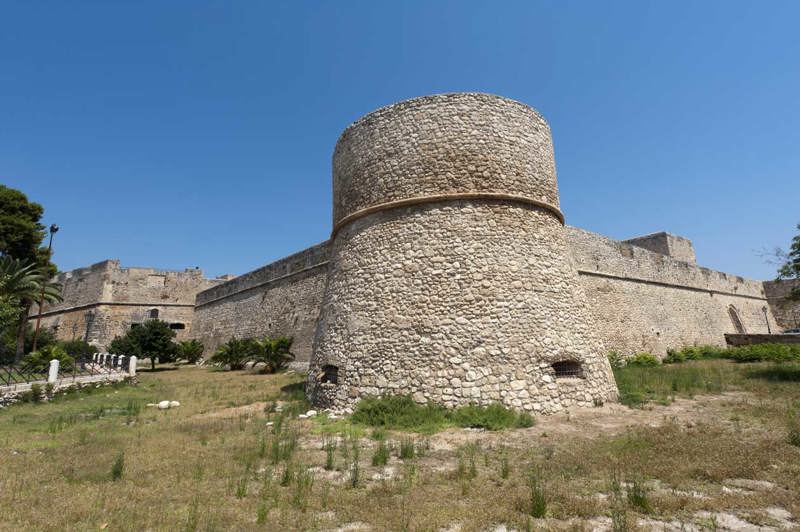
Photo: Copyright © Sisterscom.com / Depositphotos
Svevo Angioino Castle of Manfredonia
On the Adriatic coast of Puglia stands the majestic Svevo Castle of Manfredonia, a millennium-old fortress. Built in the 13th century at the behest of Frederick II of Swabia, the castle has undergone changes and expansions over the centuries, assuming its current form. The geometric regularity of the structure, typical of Swabian architecture, contrasts with the elegance of the Angevin details. The mighty crenellated towers, symbols of strength and impregnability, overlook the Adriatic Sea, offering breathtaking views of the Gargano coast. The National Archaeological Museum, set up inside the manor, houses a collection of archaeological finds that tell the story of Daunia, from prehistory to the Roman era, including Daunian steles, pre-Roman artifacts, painted vases, jewelry, and coins. The castle is approximately 43 km from Foggia.
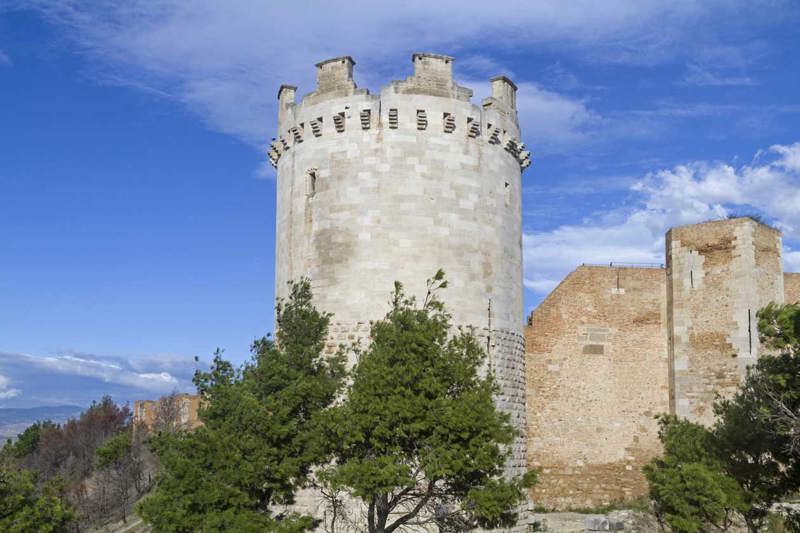
Photo: Copyright © Sisterscom.com / Depositphotos
Svevo Angioino Castle of Lucera
Commissioned by Charles I of Anjou, the Svevo Angioino Castle of Lucera includes the ruins of the complex built by order of Emperor Frederick II. Located in the Tavoliere delle Puglie area on Monte Albano hill near Lucera, one can observe the remains of the Swabian-Angevin fortress. In this site, Frederick II erected an imperial palace, which was later incorporated by Charles I of Anjou into a surrounding wall with towers. The palace, located within the fortress, did not have entrance doors. To enter or exit, temporary stairs were set up, or according to some sources, underground passages were used. Inside the palace walls was a state mint, and it is presumed that its walls also concealed Frederick II's harem. The castle is approximately 20 km from Foggia.
Partnership with GetYourGuide
Tours and excursions in Foggia and surroundings
News & Useful info
Destinations found in the vicinity
Other destinations
Airports nearby Foggia


